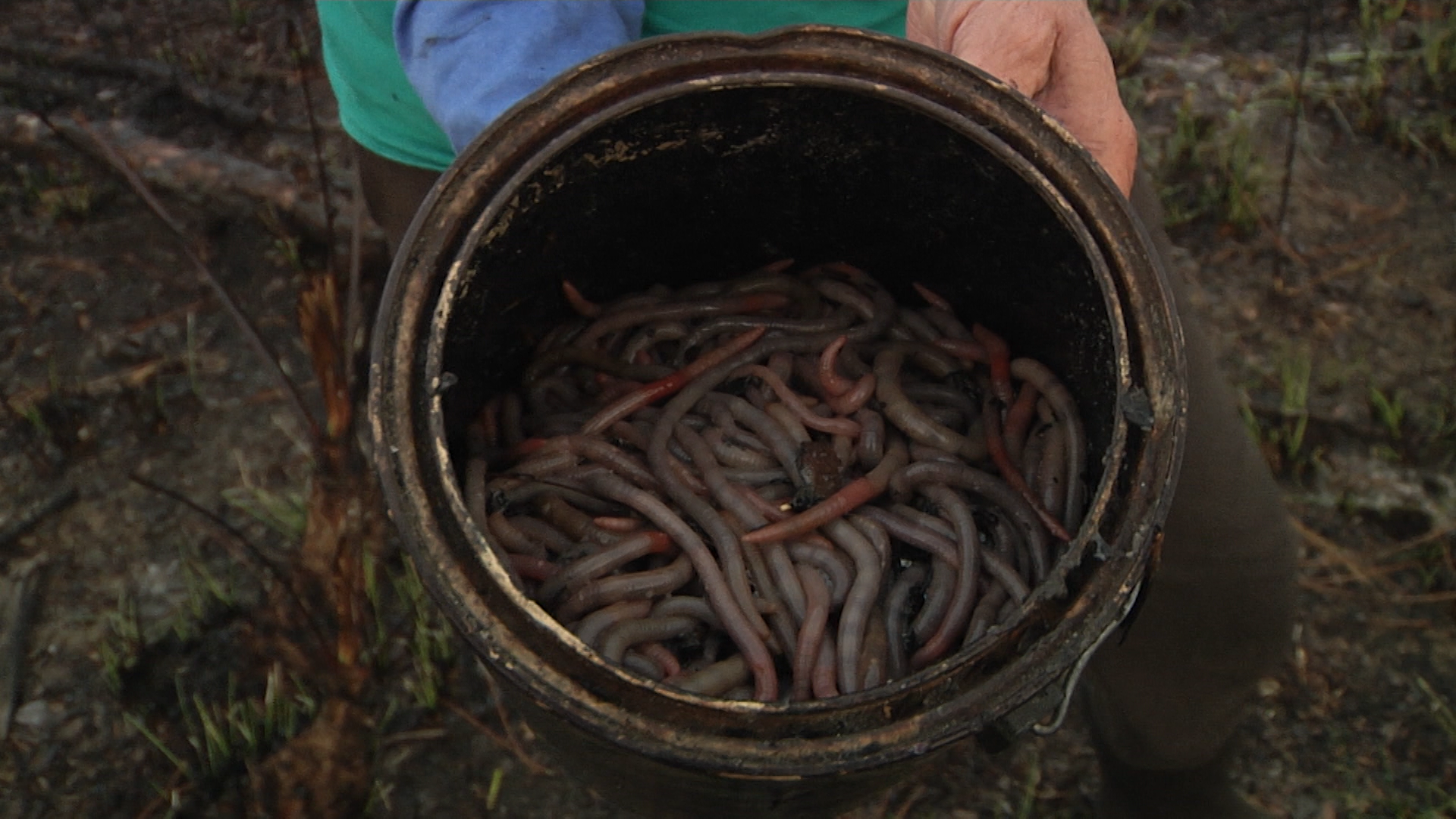

The 2016 Worm Gruntin’ Festival was held April 9th in Sopchoppy, Florida. For those who don’t know, worm gruntin’ is a technique to chase earth worms out of the ground using vibration and sound. It’s a curious thing to see and hear.
For worm harvesters, the day begins before dawn in the Apalachicola National Forest.
Gary and Audrey Revell have been harvesting worms as a business for over 4 decades. Their son, Snap, has been out there with them since before he could walk.
“We haven’t changed one thing about it. This is the way I’ve been taught. Nothing’s changed,” says Gary Revell. “My family members was doing it when I was young. We used to do it when there wasn’t no commercial sales. We got them for our own use to catch fish out of the river there at home. Word got out about that the worms were really good for fishing and it just spread around. Started selling to some people who come out of Georgia, and Alabama, and Mississippi and places like that.”
There are two things you notice right away when watching someone worm gruntin’. First, the sound from the metal scraping against the wood, creating that grunting sound. Second, you can also feel the vibration through the forest floor, even through thick hiking boots. The sound and the vibrations mimic that of moles, natural predators of the Apalachicola Forest earthworm. The worms crawl out of the ground to escape.
“But it don’t always work. Sometimes you can just grunt, grunt, grunt and you won’t see nothing, you know. It’s not just making a noise or vibrating. The worms are, I say, smarter than that. Depending if the wind’s blowing, they slack off or if it’s really cold, it takes forever for it to come up,” says Revell.
He says that it takes 4 to 6 years for an earthwork to grow to nearly a foot long.
“These worms are top quality. They’re white and they’re big and they got long shelf life to them. Some worms don’t live beyond 4 or 5 hours after you get them. You’ve got to learn this and learn to stay out of those areas where they’re not quality bait, you know.”
Audrey Revell agrees. When asked about a tiny worm, she says it’s too small to harvest. She says they usually get about 3- or 4-thousand of the longer ones out of a morning’s work. Gary chimes in “yeah… You probably have about enough of it by 10 o’clock, 11.”
Suzanne Smith is Executive Producer for Television at WFSU Public Media. She oversees the production of local programs at WFSU, is host of WFSU Local Routes, and a regular content contributor.
Suzanne’s love for PBS began early with programs like Sesame Street and Mister Rogers’ Neighborhood and continues to this day. She earned a Bachelor of Journalism degree from the University of Missouri with minors in political science and history. She also received a Master of Arts in Mass Communication from the University of Florida.
Suzanne spent many years working in commercial news as Producer and Executive Producer in cities throughout the country before coming to WFSU in 2003. She is a past chair of the National Educational Telecommunications Association’s Content Peer Learning Community and a member of Public Media Women in Leadership organization.
In her free time, Suzanne enjoys spending time with family, reading, watching television, and exploring our community.





